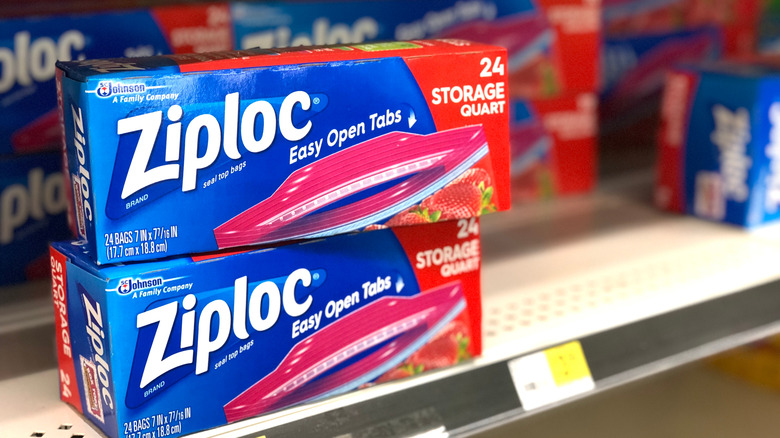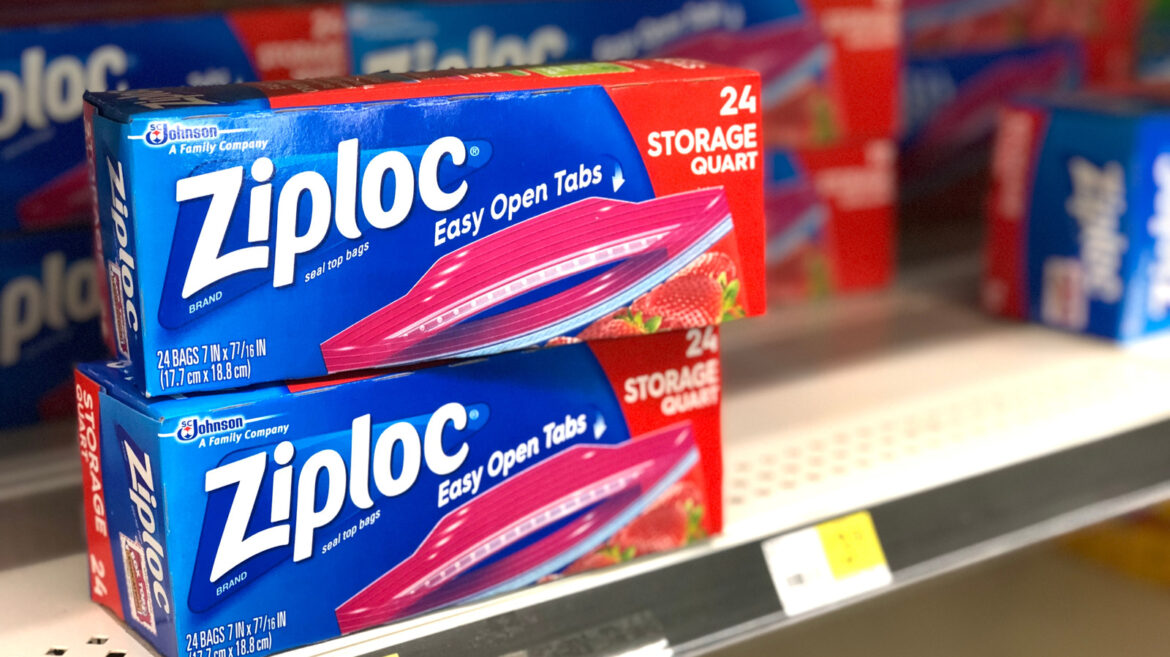
jadimages/Shutterstock
Whether you have kids who need to pack a lunch daily for school, or you yourself are a fan of meal prepping for cost-effective munching (not to mention convenience) throughout the work day, Ziploc bags have pretty much cemented themselves as an essential element of modern day society. And to be sure, the idea is great — a resealable, nearly leak-proof container that comes in different sizes for easy DIY packaging of sandwiches, apple slices, Goldfish … the list goes on. But although the bags are resealable, they’re difficult (although not impossible) to clean and reuse. Because of that, they’re typically treated as one-time only, disposable items — but Trader Joe’s has a different vision of what this lunchtime tool can look like.
Trader Joe’s food storage bags use thick, food-grade silicone to build a resealable container that’s microwave, freezer, and dishwasher safe, and a whole lot more durable than its predecessor. The bags are typically sold in a set of three, including one small, one medium, and one large bag, with the latter being a fairly close match for a gallon Ziploc and, according to the TJ’s product page, large enough to hold “roughly 3-4 slices of pizza.” So although we have a lot of respect for the fundamental role Ziploc played in our childhoods, we feel safe saying that practically speaking, Trader Joe’s food storage bags are simply miles better — both for people, and for the environment.
A comparative analysis of the two bag choices
Let’s take a more critical look at the differences between the two offerings. One of the biggest differences, beyond the material used, is the price — the Trader Joe’s set of three bags, one in each size, comes in at $9.99. This is on the pricier side for a Trader Joe’s item, and with a box of 100 Ziploc sandwich bags available at Walmart for a little over $4, the price per bag is significantly higher when it comes to the silicone choice. In fact, for the price per bag to be comparable, you would have to use each of your silicone bags more than 80 times. But if you’re packing a lunch five days a week, every week, reaching 80 uses may only take you a little over four months, meaning that your silicone pouches can become a financially wise investment, so long as you’re patient.
That being said, even Ziploc bags don’t have to be treated as single use. If you use a bag simply to hold a sandwich or a handful of your favorite Aldi’s trail mix, you can always save it, flip it inside out when you get home, rinse it out and leave it to dry on your drying rack for tomorrow’s lunch. Sure, they might eventually tear or get some sticky sauce on them that doesn’t rinse out, but if you do want to stick with the tried-and-true brand, you might as well take a step toward sustainability by using each Ziploc baggie to its fullest.


Dining and Cooking